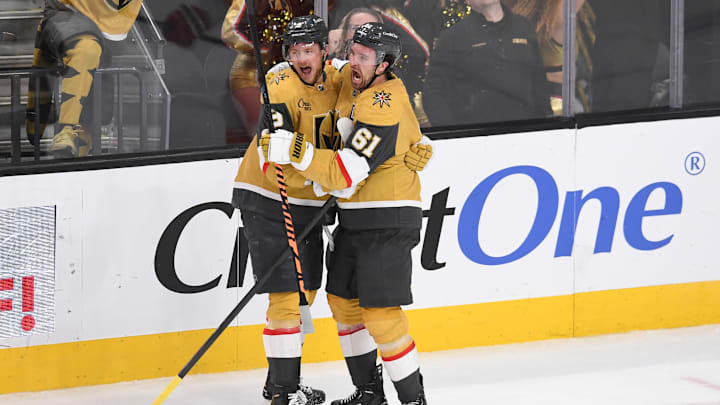The Vegas Golden Knights can't be good at everything. Yeah, it's impossible to find a steady weakness the team's had throughout its seven years of existence. They've done everything right, from having a Vezina Trophy-winning goaltender to 40-goal scorers in a single season. However, their one weakness is one you might not expect. Well, what is it? It's the man advantage.
The power play has hovered around the 20% mark consistently every season, averaging 19.6% success on the unit. Their highest mark was 22% in 2019-20, with the unit marred by turnovers and a lack of shots. Such things would give Lil' Jon nightmares, especially the "lack of shots" part. Nobody likes it when that happens, you know.
But how does a unit with players like Jack Eichel and Jonathan Marchessault underperform on a regular basis? There must be something happening with the group, where they aren't hitting their marks consistently. Could it be that they need to sacrifice more chickens? But first, let's explore what the power play in hockey means. How does a team earn one? How much time are they given when they go on this unit? Here's a deeper dive into what the definition means.
The definition of the power play, A.K.A. the achilles heel of the Vegas Golden Knights
The power play in hockey is when the opposing hockey team loses a player for committing a penalty. That can happen from different things, whether it's goaltender interference or slashing. In turn, the victimized team gets a man advantage, where the length depends on the penalty's severity. Normally, two-minute penalties are handed out for minor infractions, where the man advantage ends with a goal.
If the referee determines that the offending party's actions were reckless and intentional, the victimized team will get a five-minute power play. This type of power play doesn't end until the time runs out, meaning the opponent is defending on the penalty kill for that time frame. Fights don't end up in a power play since there are two parties involved.
So what can the Vegas Golden Knights do to improve this special teams unit? For one, getting a big body in front of the net helps. They acquired Tomas Hertl to act as a decoy in front of the net, similar to when the Detroit Red Wings had Tomas Holmstrom. With a big body redirecting pucks in front of a goaltender and obstructing views, it's led to a percentage of 46.7 in the last six games of 2023-24. Things might be looking up for fans now.
